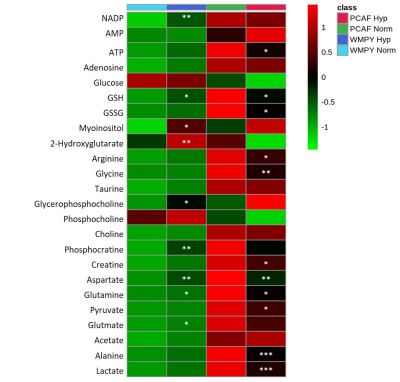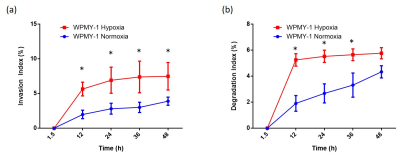Jesus Pacheco-Torres1, Tariq Shah1, W. Nathaniel Brennen2, Flonne Wildes1, and Zaver M Bhujwalla1,3,4
1Division of Cancer Imaging Research, The Russell H. Morgan Department of Radiology and Radiological Science, The Johns Hopkins University School of Medicine, Baltimore, MD, United States, 2Department of Oncology, The Johns Hopkins University School of Medicine, Baltimore, MD, United States, 3Sidney Kimmel Comprehensive Cancer Center, The Johns Hopkins University School of Medicine, Baltimore, MD, United States, 4Radiation Oncology and Molecular Radiation Sciences, The Johns Hopkins University School of Medicine, Baltimore, MD, United States
1Division of Cancer Imaging Research, The Russell H. Morgan Department of Radiology and Radiological Science, The Johns Hopkins University School of Medicine, Baltimore, MD, United States, 2Department of Oncology, The Johns Hopkins University School of Medicine, Baltimore, MD, United States, 3Sidney Kimmel Comprehensive Cancer Center, The Johns Hopkins University School of Medicine, Baltimore, MD, United States, 4Radiation Oncology and Molecular Radiation Sciences, The Johns Hopkins University School of Medicine, Baltimore, MD, United States
Hypoxia induces metabolic changes in normal prostate fibroblasts that
mimic the metabolic profile of cancer associated fibroblast. Hypoxia also
increases the degradative and invasive potential of normal fibroblasts.

Figure 1. Heat
map showing altered metabolites in the cell extracts of WMPY-1
and PCAFs incubated under normoxic and
hypoxic conditions. Each column
represents
the mean value for at least 5 biological
replicates. A two-tail
unpaired
t-test
was used
to
compare
values
obtained
under
normoxic
and
hypoxic
conditions
in each
cell line. * p ≤ 0.05, ** p < 0.01 and *** p
< 0.001. MTA: GSH:
glutathione; GSSG: oxidized glutathione.

